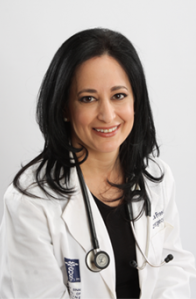How to Get into Medical School: A Comprehensive Guide (2022)
Just under 42 percent of medical school applicants in the 2020–2021 academic year ended up matriculating, according to data from the Association of American Medical Colleges.
It probably comes as no surprise that admission to medical school is fiercely competitive. The good news is that the steps to medical school are straight forward and there are multiple paths to get there.
If you are a physician hopeful, how do you increase your chances of landing one of those highly coveted spots? This guide will help.
Table of Contents
Part 1: Understand Your Own Motivations for Applying to Medical School
So many people want to be a doctor from an early age. After all, it’s a prestigious, lucrative field that allows you to help people and hopefully make a real difference in the world. But if you truly believe medicine is your calling, you should have reasons that go a step further.
It’s a long, grueling road, and your motivations must extend beyond glory if you’re going to persist.
If you are considering medical school, you likely fall in to one of the following categories of applicants:
- High school student considering BS/MD programs
- College student considering a gap year
- College graduate considering a career change
This article will offer a general overview of what you need to do to get accepted to medical school regardless of the category you fall into.
Learn About the Different Types of Medical Schools
Allopathic programs, which lead to an MD, are the more widely known of the two main types of medical programs in the United States. Osteopathic programs, leading to a Doctor of Osteopathy (DO) degree, are less common.
MD programs are probably what you think of when it comes to medical school, offering a comprehensive, research-based approach to treating illnesses and diseases. DO programs are more focused on a holistic approach, considering the person behind the disease and using a combination of therapy and touch-based treatments with traditional approaches.
As of late, these two models have become increasingly similar, although the DO path is still often considered the less selective of the paths.
The other option is attending an international medical school such as a Caribbean medical school.
Read DO vs. MD
Learn About the Different Paths to Medical School
1) Apply for a combined degree program.
If you’re set on medicine as a high school senior, you can also apply for a combined degree program, a prestigious path in which you’re essentially accepted into medical school before college. You’ll earn a BA or BS and an MD from the same school or two partner schools, sometimes in a reduced amount of time.
These programs are highly competitive, and you’ll need to maintain a certain GPA and complete requirements in the bachelor’s portion of the program, but acceptance will allow you to relax a bit, especially while your peers are busily applying to medical school later on.
2) Enter medical school right after college
This is the most typical route, although its popularity is waning a bit. In this case, you’ll apply to medical school as a rising college senior, receive your decisions in spring semester, and, assuming it’s good news, matriculate the following academic year.
There are also a small number of early assurance programs which allow students to gain admission to medical school as sophomores in college and bypass the MCAT requirement.
3) Take a gap year (or several).
More and more, students are taking one or more gap years before matriculating. During your time off, you can gain clinical or research experience, take courses to boost your GPA, participate in a gap year program, gain work experience, and more.
If you’re worried medical schools will look unfavorably at older candidates, don’t be — they actually appreciate candidates who are more “worldly” and can lend a different perspective to their class.
Read: Ideal Medical School Application Timeline
Read: Taking a Gap Year
What exactly are medical schools looking for?
To understand what medical schools are seeking in applicants, it is first important to understand the core competencies set forth by the Association of American Medical Colleges.
Do not get stressed out by this list! You will naturally demonstrate these competencies through different types of experiences and choices (outlined below):
Pre-professional competencies
- Service orientation
- Social skills
- Cultural competence
- Teamwork
- Oral communication
- Ethical responsibility to self and others
- Reliability and dependability
- Resilience and adaptability
- Capacity for improvement
Thinking and reasoning competencies
- Critical thinking
- Quantitative reasoning
- Scientific inquiry
- Written communication
Science competencies
- Living systems
- Human behavior
Part 2: Before Applying to Medical School
Before you apply to medical school, you want to reach some concrete benchmarks which are outlined below.
Step 1: Choose the Best Major (for You)
There’s no actual pre-med major. Instead, it’s a track, in which you’ll meet with a pre-med advisor in addition to your major advisor and complete certain requirements, the majority of which are science-related, in preparation for medical school. You can major in pretty much anything you want, provided you’re also able to complete your pre-med requirements.
You’ll need a competitive GPA, so choose a major that’s a strong discipline for you. Many students go into science fields like biology or chemistry, but you’re not limited to these subjects. If humanities are a strength, for example, you could always major in English or history.
Read: The Best Premed Major
Research Requirements as an Undergraduate
Your pre-med advisor will help you ensure you’re taking the right prerequisites for medical school, but you should double-check with the schools that interest you so there are no surprises when it’s time to apply. Look into these requirements early (freshman year) in order to plan ahead and determine which courses you should take each year.
Step 2: Study — and Earn a High GPA
Regardless of the path you choose, you’ll need to have a very high GPA. In addition to your overall GPA, medical schools will also look at your science GPA, an average of the grades in your science courses.
Remember that this starts freshman year. In order to demonstrate your capabilities, you’ll need to put in the work early on. If your GPA is lacking, consider taking a gap year and completing post-baccalaureate coursework to boost your average.
The most recent data shows that the average GPA for medical school matriculants in the United States in 2020-2021 were as follows:
Overall GPA: 3.73
BCPM (biology, chemistry, physics, and math) GPA: 3.66
Non Science GPA: 3.82
Read: Medical School Admissions Statistics
Step 3: Gain Scholarly Experiences
Medical schools in the United States all value and expect that students will have some research experience. This experience can be lab-based or clinically-based. It can also involve big data since so much of this information is now readily available.
Regardless, your ability to review background literature, collect, sort, analyze and interpret data to draw conclusions will all be relevant in your education and career. Independent scholarly work beyond just being a lab assistant will be valued most.
Step 4: Gain Medically-Related Experience
Shadowing
Shadowing physicians and other medical providers is one of the main ways people learn about the profession and see firsthand what it’s really like to work in the field. In order to find a professional to shadow, you’ll need to do some networking with people in your community, professors, and others in the medical field. Once you’ve secured a position, be sure to take the job seriously. It’s not just about observing — you should also be taking notes and asking questions. Keep track of the time you’ve put in so you can accurately report it.
Clinical experience
It can be more difficult to gain clinical experience before medical school, but there are some ways to do so, such as by volunteering as an EMT or hospice worker. These experiences will allow you to work directly with patients, something that will go a long way in preparing you for both medical school and your career.
Scribing
Medical scribes record interactions between medical providers and patients. While you’ll gain more hands-on experience than you will shadowing, you won’t be gaining real patient experience. Still, it’s a good activity to have on your resume.
Step 5: Participate in Additional Extracurricular Activities
Admissions committees do want to see more than medical activities on your resume. To demonstrate your interests and career and leadership potential, you’ll want to participate in community service work, which may or may not be related to the medical field. For example, you might tutor students from low-income communities. This helps demonstrate your character and interest in supporting others in need.
Leadership in organizations and clubs in and out of college will also be useful, since medical schools are looking to accept future leaders in the profession.
You may also choose to learn a foreign language, particularly Spanish, so you’re better equipped to treat diverse populations.
Step 6: Study — and Earn a High MCAT Score
The MCAT is probably the most challenging exam you’ll take in your life. This test, which lasts approximately 7.5 hours, including breaks, assesses your knowledge of the sciences and other disciplines. The four sections are:
- Biological and Biochemical Foundations of Living Systems
- Chemical and Physical Foundations of Biological Systems
- Psychological, Social, and Biological Foundations of Behavior
- Critical Analysis and Reasoning Skills
The total MCAT score ranges from 472–528. While there’s no magic number for admission, the AAMC reported that the average score for MCAT matriculants in the 2020–2021 academic year is 511.5. If you’re hoping to get into a top medical school, you’ll need to aim higher.
In order to prepare, take real practice tests in real simulated testing conditions, allotting the appropriate amount of time per section and taking breaks. Study hard. You’ll need to be disciplined, creating a study schedule to keep yourself on track.
Of course, your MCAT score alone won’t land you a coveted spot at medical school. You’ll also need to have an excellent GPA, among other qualities and experiences.
Part 3: Applying to Medical School
After all of your premedical achievement, you then want to present your candidacy as effectively as possible by following the steps outlined below.
Step 1: Secure Strong Recommendations
Your recommendations and interviews are the main ways medical schools are able to assess qualities that don’t necessarily translate to the page (i.e. your transcript and MCAT score). In addition to academic prowess, they’re looking for qualities like compassion and diverse backgrounds and skill sets.
Work on developing relationships with faculty as an undergraduate, along with professionals in the field — for example, a physician you’ve shadowed or a work supervisor. Identify your recommenders as early as possible (and don’t forget to ask them before you list them). It’s a good idea to broach the subject several months before you actually need them, at the beginning of the semester before you apply, so they have plenty of time to write a reference.
Read: Medical School Letters of Recommendation
Step 2: Write Compelling Essays and Application Materials
Your essay is another way to demonstrate who you are, not just what you’ve done in the classroom and beyond. The best personal statements are based on your experiences and weave in anecdotes that paint a picture of who you are and why you want to be a doctor.
Try to get several sets of eyes on your drafts, preferably from someone familiar with the admissions process. Of course, don’t forget to proofread!
Step 3: Apply as Early as Possible
Primary application
Most medical schools use the American Medical College Application Service (AMCAS) for the primary application, the first step in the process of applying. The application opens in early May, and students can begin submitting it in late May or early June. Since applications are accepted on a rolling basis, you should aim to complete it as early as possible — in June if you can. That means you’ll need to start working on them during the previous semester.
The primary application consists of:
- Your personal information
- Transcript
- MCAT scores (including all sittings)
- Letters of recommendation
- Work and activities section (resume)
- Medical school personal statement
You will create a list of schools to which you’ll be applying and can send this application using a single system.
Secondary applications
After the medical schools have received your primary application, they will send you a secondary one (NB: some schools filter out applicants who don’t meet the minimum admission standards based on their primary application information).
Secondary applications are school-specific and typically include essay prompts. The prompts vary, but you should be prepared to describe what appeals to you about that medical school in particular and obstacles you’ve encountered.
Again, send your secondary application back as soon as possible. Some schools give you a deadline based on when you receive your secondary application, while others have a hard deadline. Either way, aim to finish it within a couple weeks of receipt. You can look up previous prompts to help you prepare — most schools don’t change them frequently.
Step 4: Practice for Your Medical School Interviews
Medical schools will invite a varying percentage of applicants to interview, based on their review of the applications. These can be nerve-wracking experiences. As with any interview, you should put in extensive time practicing and preparing.
You don’t need to choose practice interviewers with extensive medical knowledge. These sessions are meant to help you get comfortable with discussing your experiences and qualities. You should also be prepared to grapple with complex scenarios, such as ethical dilemmas.
You may be tasked with participating in multiple mini interviews (MMI), consisting of a series of stations. At each station, you’ll be given a prompt or assessment — a “mini’ interview, if you will — by a different interviewer and will have a short period of time to respond.
In any case, you should review commonly asked medical school interview questions and MMI scenarios. You should also review your resume and achievements thoroughly, so you’re able to talk about yourself comfortably.
Part 4: Will You Get in?
Rejection isn’t easy, but it’s par for the course when you’re applying to medical school. Be prepared to face at least a few denials. Most medical schools, even those that aren’t considered “top tier,” have low acceptance rates.
To increase your chances of acceptance, cast a wide net. In addition to applying to top schools like Johns Hopkins and Harvard, include a handful of middle schools, those to which you have a reasonable chance of admission. There isn’t really such a thing as safety schools when it comes to medical school admissions.
Given that you should assume that you won’t get into most of the schools on your list, apply to as many as is feasible for you. That is, don’t apply to schools you really don’t want to attend, and don’t overdo it — the process is quite taxing. But you’ll increase your chances of admission if you apply to a wide range of schools.
There’s no doubt that the medical school admissions process is rigorous and exhausting. But your hard work can certainly pay off — if you start early on and put in the hard work.








